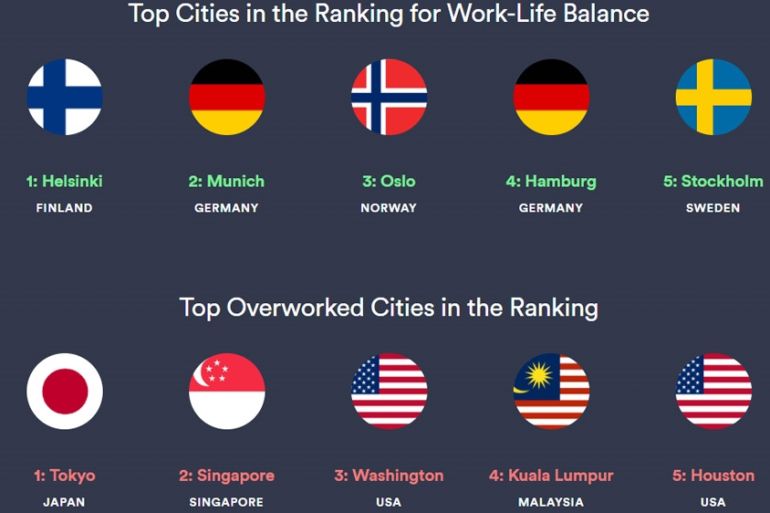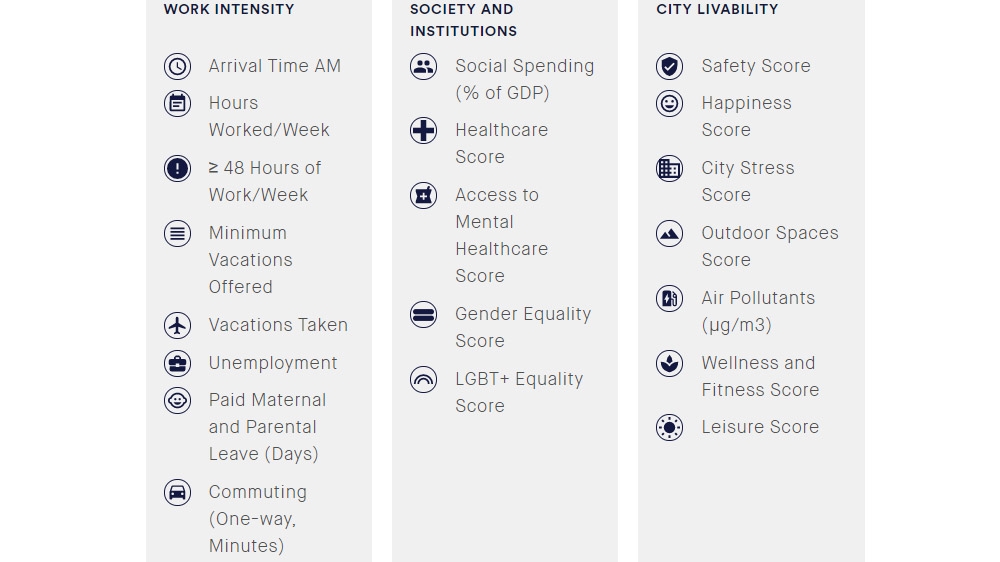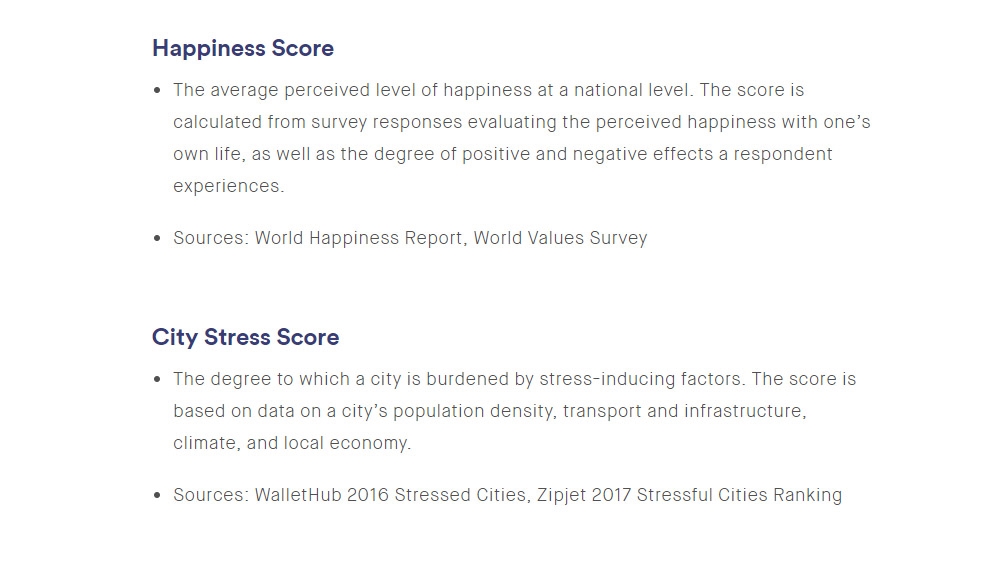San Diego, Portland, San Fran top US list for work-life balance
New survey from mobile tech company looks at urban wellbeing, livability and workforce happiness.

Work-related stress can be pernicious. Burnout affects even the most ambitious strivers. And many companies fail to help their employees balance out demanding jobs with life’s joys.
In these trying times, a study released on Wednesday sheds new light on which cities in the United States and elsewhere offer the best overall work-life balance.
Keep reading
list of 4 itemsHong Kong’s first monkey virus case – what do we know about the B virus?
Why will low birthrate in Europe trigger ‘Staggering social change’?
The Max Planck Society must end its unconditional support for Israel
By comparing data on work intensity, community support and general livability, the report – called Cities for the Best Work-Life Balance 2019 – ranks urban areas based on their success promoting healthy lifestyles.
San Diego, Portland and San Francisco earned the top spots, while Washington, DC, Houston and Atlanta came in as the most overworked places. But even those top three in the US scored towards the bottom of the work-life balance list internationally.
Workers in Barcelona and Paris take the most vacation days – around 30 on average – while those in Los Angeles take the least, just nine days.
New York City – famed for its multitude of amenities – ranked fifth for work-life balance out of 40 US cities on the list.
Work-life scores were computed by factoring in total working hours, commute time and paid maternity leave. The study also measured the extent to which different types of people in a city receive equal treatment and access to public health and welfare programmes, which are included in the livability scores. It also measured whether residents can enjoy their surrounding environs after business hours.

Pulling statistics from data provided by the Organisation for Economic Co-operation and Development, Eurostat, the International Labour Organization and the US Bureau of Labor Statistics, among others, the study encourages governments to respect work-life balance through policies and infrastructure.
The survey was produced by Kisi – a company that sells keyless access control systems – with the aim of enhancing people’s wellbeing through technological innovation. Businesses of all sizes run Kisi’s hardware and software to secure their space and promote a better workplace environment.
Selling a cloud-based, mobile-first service that caters to consumer lifestyle needs, the Brooklyn, New York-based firm has a keen interest in probing 21st-century office culture by going beyond basic metrics on cost of living, tourist attractions and nightlife.
“It is important for us to note that our professional and personal lives are not, and should not be, mutually exclusive,” said Bernhard Mehl, CEO of Kisi.
“Whether it’s the long hours, unrealistic expectations from bosses or job insecurity, workplace stress has proven to affect our physical and mental health,” he added. “Policymakers should be tackling these issues in tandem.”
US rankings in context
In addition to the several dozen American metropolises initially evaluated, the report also looked at 17 notable US cities side by side with 23 comparable international places “known for attracting professionals and families for their work opportunities and diverse lifestyle offerings”.
“As the first installment of a continuous study, a shortlist of in-demand metropolises worldwide with sufficient, reliable, and relevant datasets were selected,” said the report. “In future iterations, this index aims to include a larger selection of cities as data becomes more widely available.”
While San Francisco had high livability and social wellbeing, employees there work the most number of hours (44) per week on average in the US.
Phoenix employees are expected to arrive at work the earliest, getting to the office on average at 7:34am. But one of the latest employee arrival times worldwide (10:30 am) was that of the US capital, Washington, DC.
Omaha, Austin and Colorado Springs ranked as among the least stressful US cities, while Detroit, Cleveland and Milwaukee were the most stressful.
Detroit residents also reported being the most overworked, and were ranked as having the worst work-life balance, followed by residents of Memphis and Atlanta. That being said, Atlanta placed just above Buenos Aires, Tokyo and Kuala Lumpur for work-life balance globally.
In the study, the US was the only country not to offer annual leave at the federal level. The study found that employees took an average of just 10 days off – still scoring better than Asian cities such as Singapore and Hong Kong (where the average was seven days).

New York, San Diego, San Francisco, Los Angeles and Sacramento were the only US cities with paid parental and maternal leave – 180 in New York State and 117 days in California. This paled in comparison with the global leader in this category, Helsinki, which offers 1,127 days. (The US states of New Jersey and Rhode Island also offer mandatory paid family leave).
Wichita employees have the shortest commute, just under 20 minutes, while those in New York City have the longest, over 36 minutes.
Meanwhile, Columbus had the lowest unemployment rate, 2.6 percent. Boston scored the best for access to healthcare – mental and otherwise. Minneapolis ranked among the best for gender equality. People in Austin were among the happiest, with Detroit residents the least happy.
New York attained the best fun score due to the “variety and vibrancy of their leisure offerings and employment in cultural and creative industries”. The Big Apple was just behind Tokyo and London globally. Tulsa was tied for the least-fun city in the US.
Albuquerque was the US city with the most outdoor spaces, while Los Angeles had by far the highest amount of air pollutants.
Global work-life leaders
Internationally, workers in Oslo toil the fewest number of hours (38.9) per week, followed by those in Sydney and Melbourne. Just four percent of employees work more than 48 hours per week in Stockholm and Milan.
Oslo also had the best access to mental healthcare and highest gender equality score, as Stockholm logged the best record for LGBT equality.
People in Paris have the highest percentage of public spending going to social welfare, at 32 percent, while Australian cities had the highest healthcare scores – followed by cities in Japan and Italy.
Seattle, Portland and Stockholm had the lowest levels of air pollutants internationally, and Zurich occupied the number-one spot for fitness and wellness.
Singapore earned the top prize for public safety, followed by Tokyo and Toronto, and also had the highest outdoor spaces score.
Helsinki – followed by Oslo and Zurich – had the highest happiness score. Munich ranked as the least stressful international city.

“It surprises me that – despite the discussions present in the media surrounding workplace stress – we faced difficulties in collecting reliable data on workplace-related stress,” said Kisi CEO Mehl.
“Despite living in an era where unprecedented advancements have been made in technology and connectivity, we have failed to address the most everyday aspect of enhancing our everyday lives: finding the balance between work and leisure,” he said.
“We hope that this study highlights the need for more research to optimise the wellbeing of citizens in order to counter the psychological and economic costs of workplace stress,” said Mehl, who noted that these costs amounted to $190bn per year in the US alone.
“As long as employees are stressed,” Mehl said, “they will not take advantage of the safeguards created for their wellbeing – no matter how progressive government and company reforms are”.
He added that the goal of the study was “not just a happier, healthier workforce – but in the long-term a more economically viable one”.